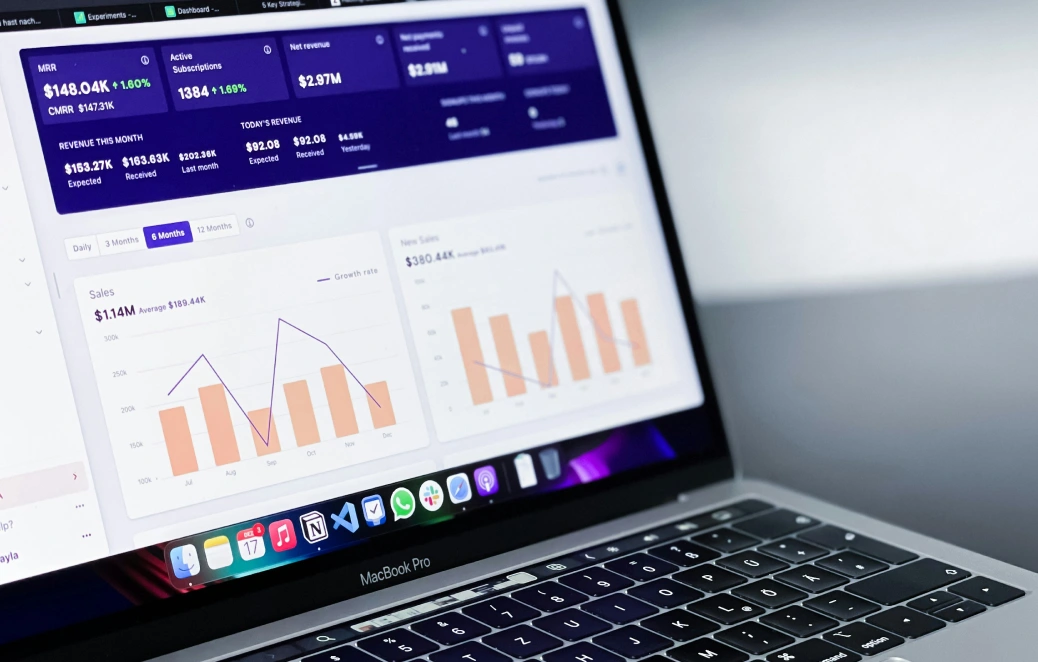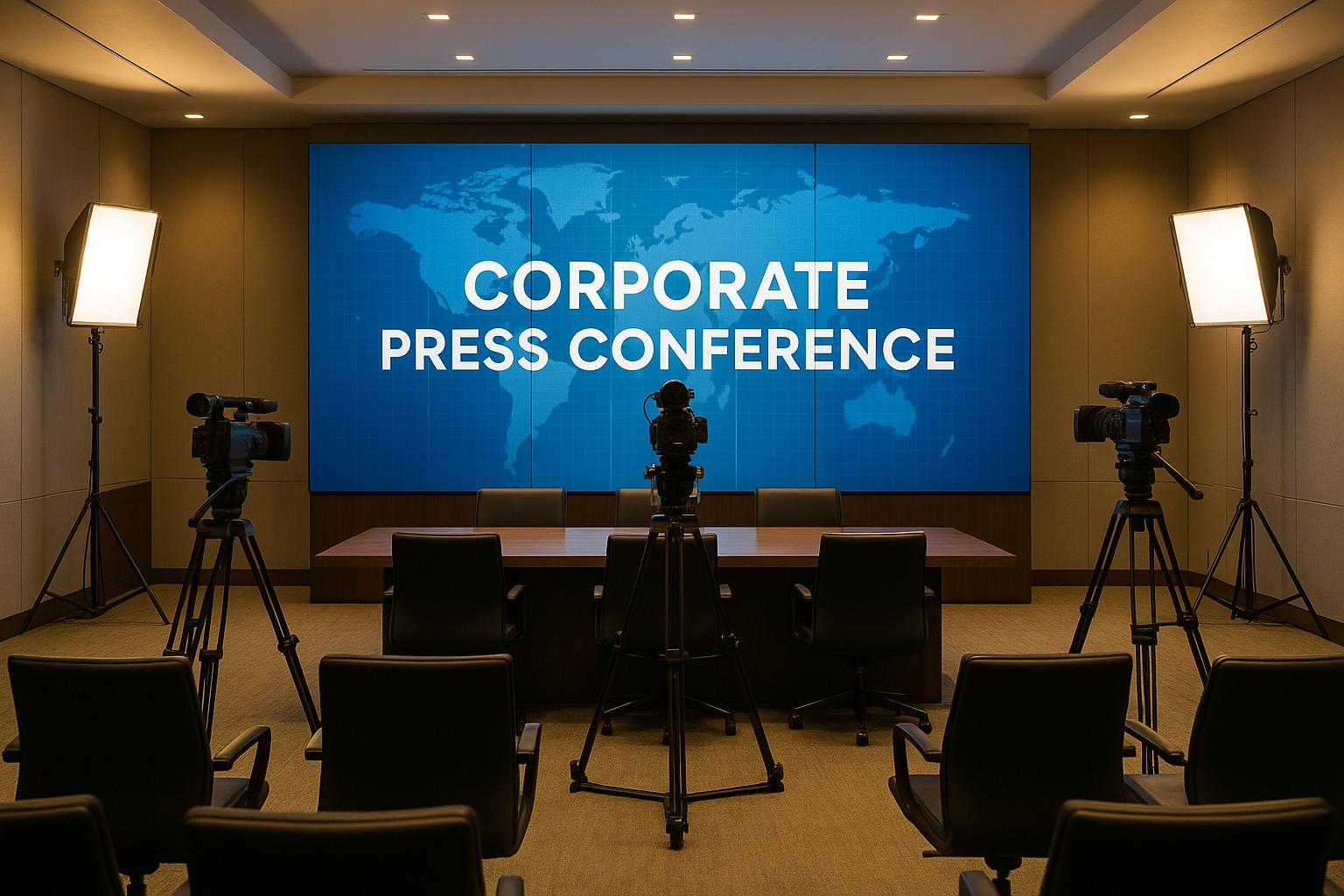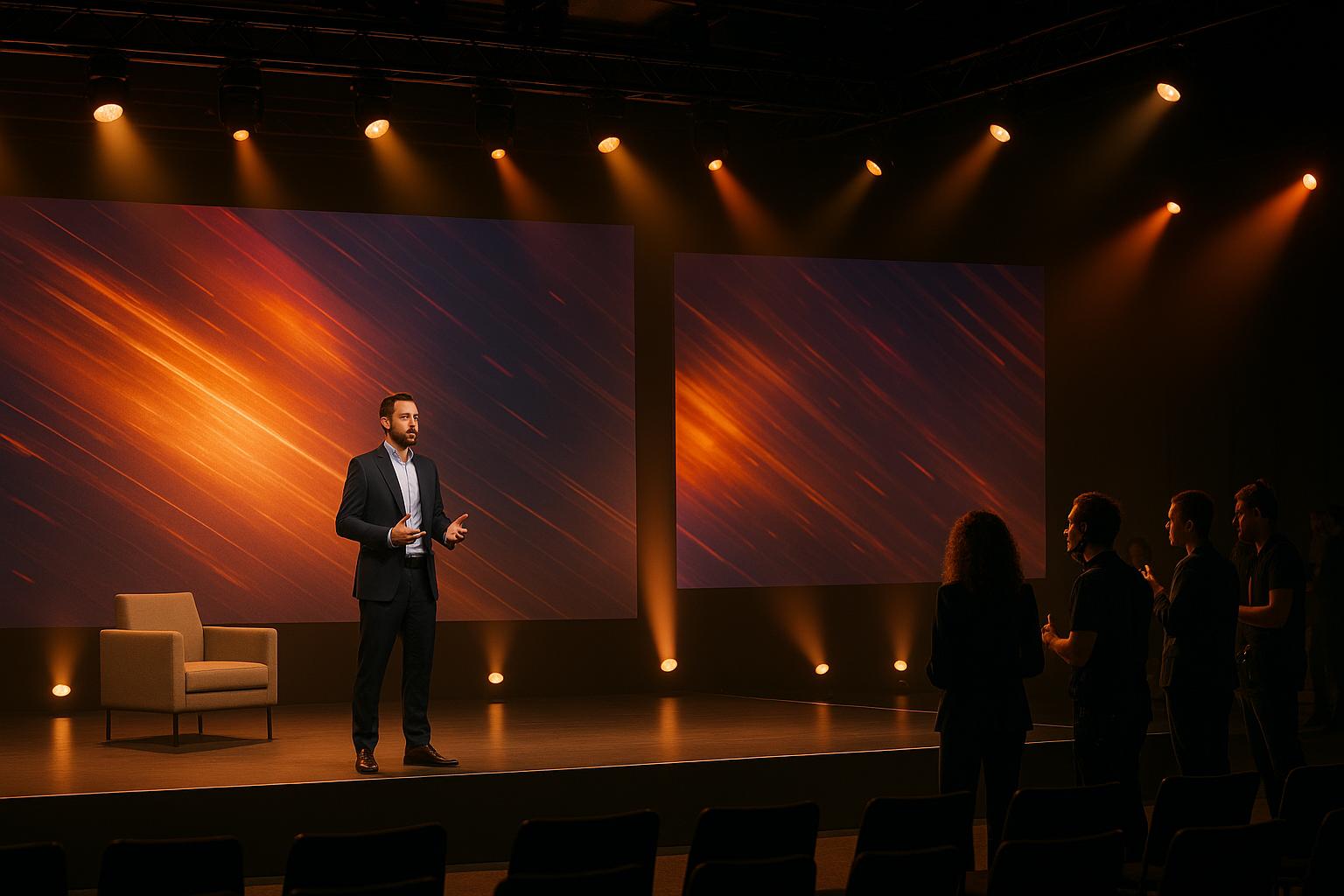Tips To Planning A Franchise Conference For Multiple Regions

Chief Executive Officer

Organizing a franchise conference across multiple regions is complex but manageable with the right approach. The key challenges include balancing consistent branding with regional relevance, navigating communication barriers, and addressing logistical differences. Here's how to tackle these effectively:
- Brand Consistency: Ensure a unified identity by using clear guidelines for visuals, messaging, and operations. Centralized templates with room for minor local adjustments help maintain alignment.
- Regional Customization: Tailor content to specific markets by including local success stories, addressing regional challenges, and inviting relevant speakers.
- Technical Excellence: Standardize audiovisual setups, conduct thorough rehearsals, and ensure real-time troubleshooting to deliver a seamless experience.
- Smart Tools: Use event management software for centralized registration, real-time communication, and venue coordination. Features like offline check-ins and detailed analytics improve efficiency.
- Logistics Planning: Choose accessible venues, respect local customs, and work with reliable vendors while ensuring compliance with regional regulations.
Tips For Planning Your Annual Franchise Conferences
Building Consistent Branding and Messaging
When your franchise conference spans across multiple regions, keeping a unified brand identity isn't just a goal - it's a necessity. With 800,000 franchise outlets in the U.S. contributing $860 billion to the economy annually, the pressure to maintain brand consistency is immense. A slip-up in one region can ripple through and harm your franchise's reputation. That’s why clear, enforceable brand standards are essential for every region involved.
Here's the thing: 81% of customers remember a brand's color before they recall its name. And if that’s not enough to stress the importance of consistency, consider this - half of social media users are willing to boycott a brand after experiencing poor service at just one location. Every regional conference becomes a pivotal moment to either strengthen or damage your franchise’s image.
Brand consistency isn’t just about logos or slogans; it’s about every detail - presentations, staff behavior, operations, and the overall experience your brand promises.
Creating and Enforcing Brand Guidelines
Think of your brand guidelines as the rulebook every regional team must follow. These guidelines should cover everything: your visual identity (logos, fonts, colors, and imagery), voice and tone, customer interaction protocols, marketing campaign approval processes, and even operational standards that influence attendee experiences. The key is to root these guidelines in your franchise’s core mission and values. This ensures that even when local adaptations are necessary, they still align with your brand’s essence. Not only do these guidelines protect your brand, but they also simplify regional planning, making it easier to stay consistent.
To avoid confusion or mixed messaging, establish clear approval workflows. This means reviewing marketing materials, signage, and promotional content before they go live. These workflows act as a safeguard, ensuring that every piece of communication reflects your brand accurately.
Maintaining Messaging Consistency Across Regions
While strict brand guidelines lay the foundation, your messaging also needs to hit the right balance - staying true to your brand while adapting to local contexts. Your franchise’s core values and promises should shine through in every message, regardless of the region. A great way to achieve this is by using centralized messaging templates. These templates can incorporate your strategic goals while allowing for slight regional tweaks. This approach prevents conflicting messages that could dilute your brand equity.
Don’t underestimate the power of personalization, either. Tailored communication, like personalized emails, can yield transaction rates six times higher than generic ones. By combining consistent messaging with personalized touches, you can engage your audience more effectively while reinforcing your brand’s identity.
Customizing Content for Regional Audiences
Consistent branding lays the groundwork, but tailoring content to specific regions ensures it resonates. While maintaining a unified brand image is important, adapting conference materials to address regional challenges not only boosts engagement but also delivers value. Deciding what to adapt and what to standardize requires thoughtful planning.
Organizing Sessions Based on Regional Needs
Designing sessions around regional priorities starts with understanding local challenges. Conduct pre-conference surveys with franchisees to gather insights. Then, build an agenda that balances company-wide updates with breakout sessions tailored to specific needs like market dynamics, regulatory differences, customer expectations, or varying experience levels. This approach respects your brand's core while addressing unique regional concerns.
Including Local Success Stories and Speakers
Highlighting local success stories and inviting respected regional experts to share their insights adds authenticity. Present measurable results that showcase effective strategies and invite regional managers to speak. Their dual understanding of corporate goals and local realities helps bridge the gap between centralized strategies and on-the-ground execution.
Balancing Regional Customization with Overall Goals
While your main conference goals should remain unchanged, regional adaptations can complement and enhance these objectives. For example, if the overarching goal is boosting customer retention, each region can explore strategies that reflect their specific market conditions while staying aligned with the broader mission.
Franchises leveraging AI for marketing have reported a 20% increase in customer loyalty, translating into a 30% jump in sales. Use these tools to customize content delivery without losing central oversight. Establish clear approval processes, allowing regional teams to adapt examples and case studies, while reserving major strategic changes for corporate review.
Regular check-ins with regional coordinators throughout planning ensure alignment. Periodic reviews guarantee that all regional adaptations support the overarching goals, keeping the entire team aligned no matter the geographic location.
Managing Audiovisual and Technical Production
Flawless audiovisual execution is a cornerstone of successful multi-region planning. It’s not just about the tech; it’s about delivering your brand’s promise seamlessly across every location. A single technical failure can overshadow even the most meticulously planned franchise conference. To avoid such pitfalls, standardizing your audiovisual (AV) approach is essential for maintaining professionalism and minimizing disruptions.
Standardizing AV Equipment and Setups
The first step in creating uniform AV standards is conducting a thorough assessment of each venue. This involves evaluating factors like audience size, room layout, lighting, acoustics, and the compatibility of existing technology. By tailoring your solutions to each location, you can avoid the pitfalls of a one-size-fits-all approach.
For centralized control and high-quality media streaming, consider implementing AV over IP solutions. These systems allow you to manage audio, video, and presentation materials from a single hub, ensuring consistent quality and timing across all regions.
Centralizing AV equipment in dedicated cabinets can simplify setup and troubleshooting. A standardized checklist - including backup adapters, microphones, and cables - helps reduce the risk of last-minute technical hiccups. Once your setups are in place, conducting thorough technical rehearsals ensures everything runs smoothly.
Running Pre-Event Technical Rehearsals
Technical rehearsals are your safety net against on-stage mishaps. A full AV run-through is crucial to verify that all equipment is functioning properly. These rehearsals give your AV teams the chance to identify and address potential issues well before the event begins.
Involve your AV teams early in the planning stages. Provide them with detailed schedules for setup, rehearsals, and breakdowns, and, if possible, grant them access to venues at least two days in advance. This extra time can be invaluable for resolving location-specific challenges.
To ensure real-time troubleshooting during the event, designate a direct AV contact at each venue or bring in independent consultants. Structured feedback during rehearsals is also key - it helps document necessary adjustments and ensures consistency across all regions.
Once rehearsals are complete, it’s time to choose the AV setup that best aligns with your conference’s goals.
Comparing AV Setup Options
Selecting the right AV setup depends on the primary focus of your conference. Whether your event emphasizes interactive presentations, collaborative discussions, or networking, your AV equipment should align with these objectives. Room size and audience capacity are also critical factors in determining the best setup.
sbb-itb-ae35a94
Using Event Management Tools and Software
Managing the logistics of multi-region conferences can be a daunting task, but the right tools can make all the difference. Event management platforms are designed to centralize operations, streamline processes, and improve real-time coordination. These tools eliminate the need for repetitive manual tasks, allowing you to focus on delivering a meaningful experience for attendees. Choosing a platform that aligns with your specific requirements is key to success.
Key Features for Multi-Region Conferences
Here are some essential features to look for when managing multi-region events:
- Centralized Registration Management: A good system should handle region-specific pricing, session tracks, and meal options seamlessly. It should also direct attendees to the correct regional sessions while maintaining a unified database for easy access and updates.
- Real-Time Communication Tools: Instant messaging for regional coordinators, automated email sequences tailored to specific audiences, and push notifications for last-minute updates are vital. Being able to segment communications by region, role, or interest ensures attendees receive the information that matters most to them.
- Multi-Location Venue Management: Look for features like integrated floor plans, capacity tracking across venues, and coordinated catering management. The best platforms also offer mobile check-in options that work offline, addressing potential connectivity issues in different regions.
- Comprehensive Analytics and Reporting: From real-time insights during the event to detailed post-event analysis, robust analytics can track attendance trends, measure engagement across sessions, and provide ROI reports that account for regional cost variations.
These features are essential for a platform that simplifies operations while integrating seamlessly into the broader event production process.
Corporate Optics' Integrated Event Production Services

Corporate Optics takes event production to the next level by offering a fully integrated suite of services. Their solutions cover everything from registration and technical production to speaker support, ensuring consistent branding and smooth regional adaptations. With their expertise in audiovisual design and post-event analytics, organizers can deliver unified messaging while tailoring content to the unique needs of different regional audiences.
Comparing Event Management Software Features
When choosing an event management platform, it's helpful to compare the capabilities of different options. Here's a breakdown of how features vary across basic, professional, and enterprise-level solutions:
| Feature | Basic Platforms | Professional Platforms | Enterprise Solutions |
|---|---|---|---|
| Multi-Region Registration | Single registration form | Region-specific forms with basic customization | Advanced segmentation with dynamic pricing and content |
| Communication Tools | Basic email blasts | Targeted messaging by region/role | Personalized, multi-channel delivery |
| Venue Management | Single location support | Multiple venues with separate management | Integrated multi-location coordination with real-time updates |
| Mobile Functionality | Basic app | Offline check-in and networking features | Full offline capability with data synchronization |
| Analytics & Reporting | Basic attendance reports | Comparative regional performance tracking | Predictive analytics and ROI optimization |
| Integration Capabilities | Limited third-party connections | Standard CRM and marketing tool integration | Custom API access with enterprise system connectivity |
| Support & Training | Online documentation only | Email and chat support with training materials | Dedicated account management with on-site training |
Handling Logistical and Regional Challenges
Planning a multi-region franchise conference comes with its own set of logistical hurdles. From coordinating venues to managing vendors, each region brings unique challenges that can influence the success of your event. Balancing regional relevance with overall event cohesion requires careful planning and attention to detail.
Selecting Accessible Venues and Coordinating Travel
When picking venues in different regions, accessibility should be a top priority. Look for locations near major airports, public transportation, and main travel routes. Don’t forget to factor in local traffic patterns, parking availability, and even time zone differences. For urban venues, parking fees might be unavoidable, while suburban or rural areas may offer free options. To simplify travel arrangements, negotiate group discounts with airlines and hotels. Offer a mix of hotel options to suit varying budgets, and ensure session schedules align with local time zones to avoid confusion.
Adapting to Regional Customs and Preferences
Every region has its own customs, preferences, and schedules, and your event should reflect that. Tailor dining options to local tastes and adjust session formats to align with regional presentation styles. Pay close attention to local holidays, school breaks, and religious observances that could impact attendance. Plan your calendar accordingly to avoid conflicts. Weather is another factor - have backup plans in place for extreme conditions, whether it’s unexpected storms or high temperatures.
Managing Vendors and Compliance
Partnering with local vendors can streamline logistics, but consistency across all locations is crucial. Set clear expectations for quality, delivery timelines, and compliance. For catering, provide detailed dietary and portion requirements. For technical needs, outline audio-visual standards and ensure thorough testing protocols are in place. Additionally, familiarize yourself with local regulations, such as insurance requirements, liability standards, and tax implications. Vendors should also meet accessibility guidelines and adhere to local payment terms. Staying proactive in vendor management helps ensure a smooth and compliant event in every region.
Key Takeaways for Multi-Region Franchise Conferences
Pulling off multi-region franchise conferences successfully comes down to three key elements: consistency, regional customization, and smart use of technology. The most impactful events strike a balance between maintaining a unified brand identity and tailoring content to suit regional audiences. These principles form the backbone of the strategies outlined earlier.
Consistency is the cornerstone of a strong multi-region event. Clear brand guidelines ensure your message stays cohesive across all locations, reinforcing trust and solidifying your brand's identity.
Customization at the regional level enhances engagement. By weaving in local success stories, featuring regional speakers, and using examples that resonate with specific audiences, you can create a more personal and meaningful experience. This approach helps attendees connect with your message while staying aligned with the broader conference goals.
Technology also plays a vital role in simplifying regional logistics. Event management platforms can give attendees instant access to schedules, allow for seamless breakout session planning, and enable digital networking opportunities.
Handling logistics across different regions requires meticulous planning. This includes choosing venues that are easily accessible, respecting local customs, and setting clear expectations with vendors to avoid surprises.
Corporate Optics stands out as a partner in tackling these challenges. Their expertise spans every aspect of event production, from standardized audiovisual setups to venue sourcing. They also offer AI-powered tools and post-event analytics, which not only simplify logistics but also provide actionable insights. These services perfectly complement strategies like thoughtful venue selection and effective vendor coordination.
FAQs
How can I maintain brand consistency while adapting a franchise conference to different regional needs?
To maintain brand consistency while allowing for regional customization, start with a solid foundation: comprehensive brand guidelines. These should outline everything from visual elements to tone and messaging. Make sure every franchise location has access to these guidelines to keep materials and communication aligned across the board.
Next, provide franchisees with centralized tools, such as pre-approved templates, graphics, and content. These resources can be adapted to suit local markets while still reflecting the brand’s core identity. When planning conferences or events, tailor the content to regional trends and preferences. This helps attendees connect with their local audiences while staying true to the overarching brand.
Finally, invest in market research for each region. Understanding local demographics and cultural nuances allows you to craft messaging that speaks directly to diverse audiences, ensuring your brand resonates everywhere it’s represented.
How can I effectively manage audiovisual and technical production for conferences in multiple regions?
To handle audiovisual and technical production across various regions successfully, partner with skilled production teams who specialize in sound, lighting, video, staging, and set design. Their expertise ensures that each location delivers a consistent and high-quality experience, customized to meet local requirements.
On top of that, leveraging dependable event management software can simplify communication and coordination. This tool helps maintain consistent branding and ensures all technical elements are in sync, delivering a smooth and cohesive experience for attendees.
How does event management software simplify planning for a multi-region franchise conference?
Event management software makes organizing multi-region franchise conferences much easier by automating essential tasks like booking venues, handling attendee registrations, and managing audiovisual needs. This automation cuts down on manual work and ensures a consistent approach across all locations.
Another key benefit is improved communication. By centralizing information, the software keeps all teams on the same page, no matter the time zone or regional differences. Plus, with features that track progress and manage resources effectively, it streamlines the entire process, saving time, reducing effort, and minimizing mistakes along the way.
Related Blog Posts









